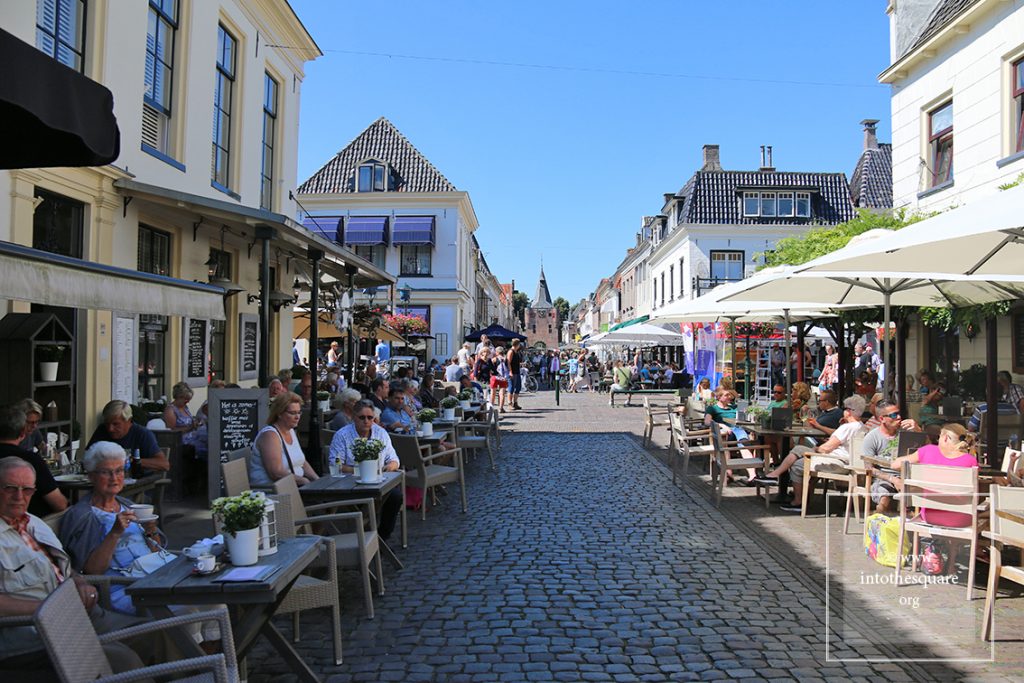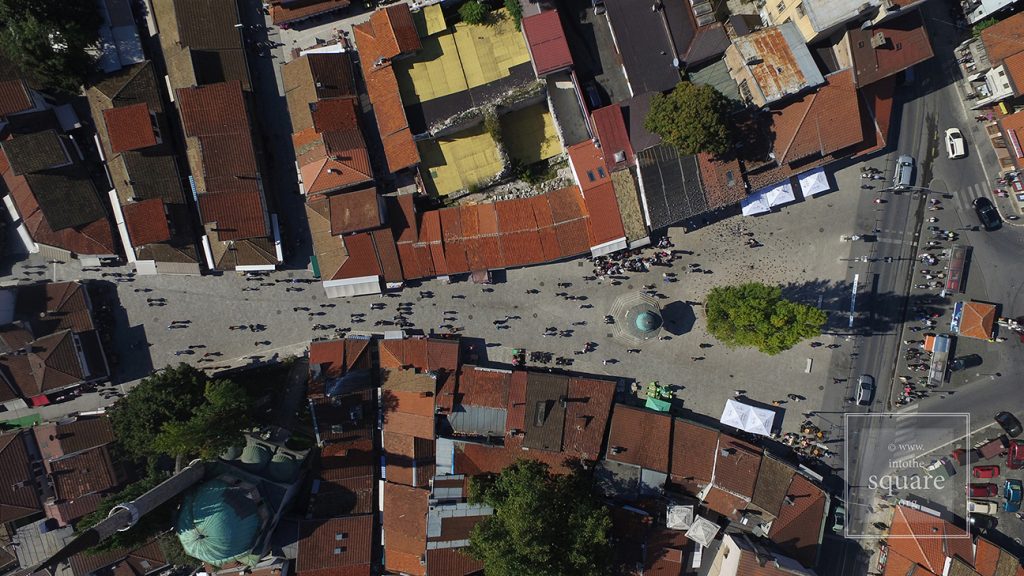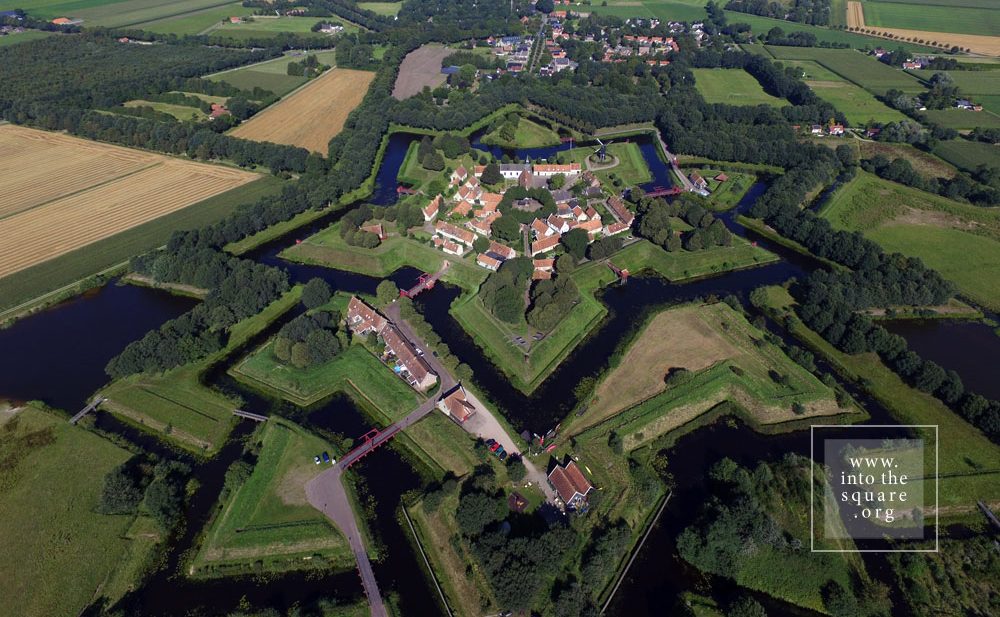The lives of European squares vary from city to city, country to country, culture to culture. It is nearly midnight; while a lone traveler might be hurrying home across an empty square in northern Germany, the squares in the Iberian Peninsula are just waking up, as people emerge to eat, drink, and catch each other up on their days. In winter the contrast is not as sharp, as bustling Christmas fairs enliven the northern squares, while the south slows down somewhat. The squares of all European cities pass from season to season through various rhythms and rituals, showing their many faces. But squares can be divided into even more complex categories than northern and southern. Positioned on a map, it can be seen that the squares with a richer historic and aesthetic presence tend to be found in specific regions, forming a sort of network. Long before the Internet, cities were tied to one another through invisible connections, creating somewhat similar urban ‘networks’.
Italy is by definition the land of squares. Many squares regarded as masterpieces are found north of Rome. Northern Italy boasts a higher number of squares per city, at times ingeniously interconnected. The South might have relatively fewer squares, but they are no less noteworthy. While it is difficult to find an unknown square in Italy, I have included here a few lesser-known squares of interest to the history of urbanism, such as Palmanova, or the narrow square in the tiny medieval settlement of Pitigliano.
Across the Adriatic, the squares of the Dalmatian Coast have been severely overlooked. Once under the rule of the Republic of Venice (though some settlements date back even further), foreign encounters, particularly with southern Slavic cultures, have left their mark on the local squares. Cities throughout Slovenia, Croatia and Montenegro host such squares, but one finds fascinating squares all throughout the Balkans.
The historic squares of Central Europe, north of the Alps and throughout the former Austro-Hungarian Empire, are a few centuries younger than their Italian counterparts. While visibly influenced by their predecessors, the unique characteristics of the central European squares are not obscured. It may seem surprising that most of these squares are found outside the powerful centre of Austria, but German colonists, deployed by Austro-Hungary, arriving in the early Middle Ages established many of these settlements. The Czech government has recognised more than forty historical cities in Bohemia and Moravia as urban heritage reservations– cities that developed around large, beautiful squares. Although fewer in number, squares throughout Slovakia, Slovenia, Hungary, and Romania follow the same template. Paradoxically, the central European squares are less ‘sophisticated’ than those in Germany proper, as can be seen by comparing them with some medieval squares that have survived the Second World War bombings, including ones in the Harz Mountains, among others.
Another area containing special squares is the aforementioned Iberian Peninsula. Spain and Portugal are both countries with ‘dynamic’ squares. Each Spanish settlement, no matter how small, has a Plaza Mayor, which, quite late in the evening, becomes alive and remains alive until deep into the night: a community and family life that can be glimpsed in the rest of Europe through old photos.
Even when squares are ‘cultural imports’ as recent as the 19th and 20th centuries – such as those in Balkan cities or in the Caucasian countries between the Black Sea and the Caspian Sea – they demonstrate an interesting synthesis of local traditions and histories. Tbilisi, the capital of Georgia, an ancient rest stop for caravans travelling along the Silk Road, has the Meidan square or Vahtang Gorgasali, originally a bazaar on the trade route.
To a certain degree the selection of squares to be presented was subjective, however these squares are also among the best examples I was able to find to illustrate the historical, conservation, and urbanistic arguments presented on this website. I relentlessly favoured the lesser known and less travelled squares, although some famous squares do appear in the following pages. A number of European countries significant to the study of squares are missing for a technical reason: drone photography is not legally possible and, in the meantime, in many of the countries where I had taken images, drone photography has become restricted for legal reasons.


































































